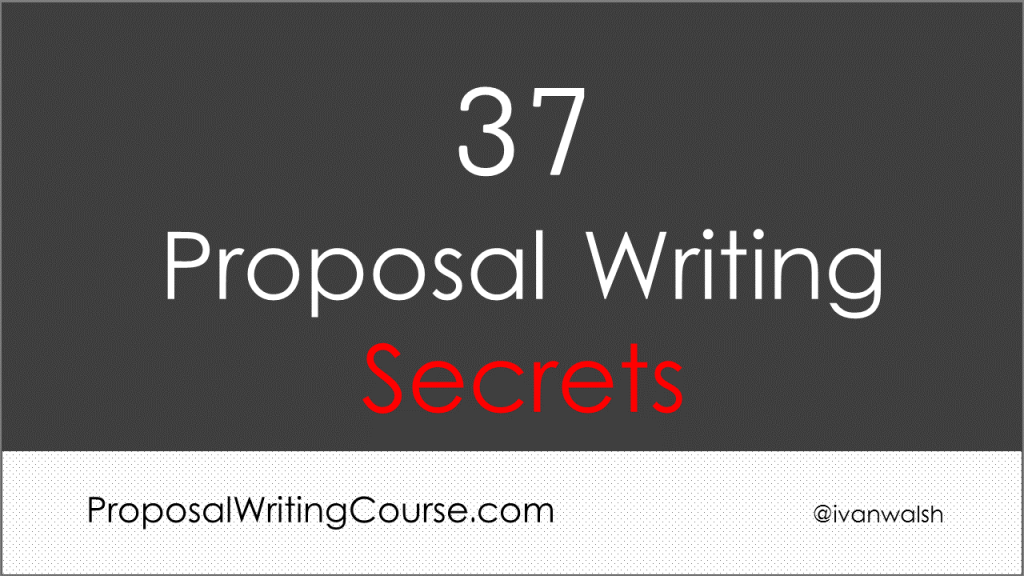This short course on proposal writing reminds us that our business proposal does not stand alone. It is process of a larger process that involves planning, research, writing, editing, proofing, submission and acceptance.
This list gives 37 ways to improve your next proposal. Scroll through it and tell me what I missed.
- Show that your response is logical and organized
- Make the information easy to find. Cross reference against the Request For Proposal
- Include a table of contents for proposals over 10 pages in length
- Ensure that your Proposal is in compliance with the RFP
- Arrange material in order of priority
- Arrange everything in the order that’s most important to the client
- Arrange the response in accordance with their requirements
- Number pages and sections consecutively; do not re-number each section
- Use headings
- Each section title should stresses the main benefits
- Each section title should help readers orient themselves
- If possible, express the key point of the section in the headline, or immediately after it.
- Highlight important points
- You can emphasize the most positive points by using bold, underlining, different fonts, spacing, titles, bullets and summaries
- Content – Sell the Message
- Respond completely
- Answer every question in the RFP. Failure to respond correctly to the RFP may disqualify your proposal. The client put these questions in for a reason, and expect an answer.
- Avoid banal headings and titles
- Rather than say “Development Section,” say “Ten Ways to Improve Your Processes”
- Use action verbs in heads, especially verbs that stress a benefit for the client
- Avoid boilerplate
- Don’t recycle resumes and corporate profiles from previous proposals; modify them in accordance for the proposal at hand. Using old, tired resumes will be perceived by the reader, and will count against you when they can making the final judgments.
- Avoid hype, padding and other self-congratulatory drivel. Remember that the proposal is a legal document that becomes part of the contract if you win
- Support your recommendations
- By giving specific details and quantifying the benefits whenever possible
- Don’t just say that you will comply with a requirement — say how we’ll do so
- Don’t attack competitors. Refer to rival products if you must.
- Point out the weaknesses of alternative solutions.
- Use a strong closing statement
- Ask for their business; tell the reader exactly what you want him or her to do
- Remind the reader of the benefits of taking action
- Avoid business cliché’s
- Avoid hackneyed openings and closings that clients have read a thousand times. Avoid “I would like to take this opportunity to thank you for considering the enclosed . . .” Get to the point: “Here is your proposal.” Avoid “If you have any questions, please feel free to call.” That closing has been done to death, so avoid it and write something more genuine.
- Make your proposal easy to understand
- Use the same terms and jargon that appear in the RFP. Don’t try to impress the client with your own special brand of buzzwords or TLA (three-letter acronyms)
- Use simple, direct language
- Wrap up the Proposal with confidence
What did I miss?
About the Author: Ivan Walsh is a left-handed technical writer who writes business proposals for clients. He also shares business writing tips for smart people at Klariti.
